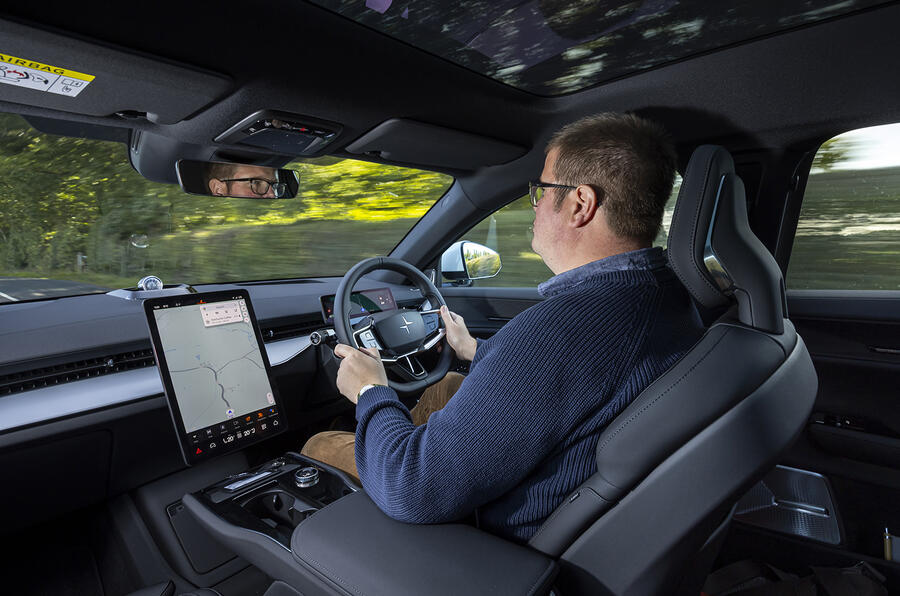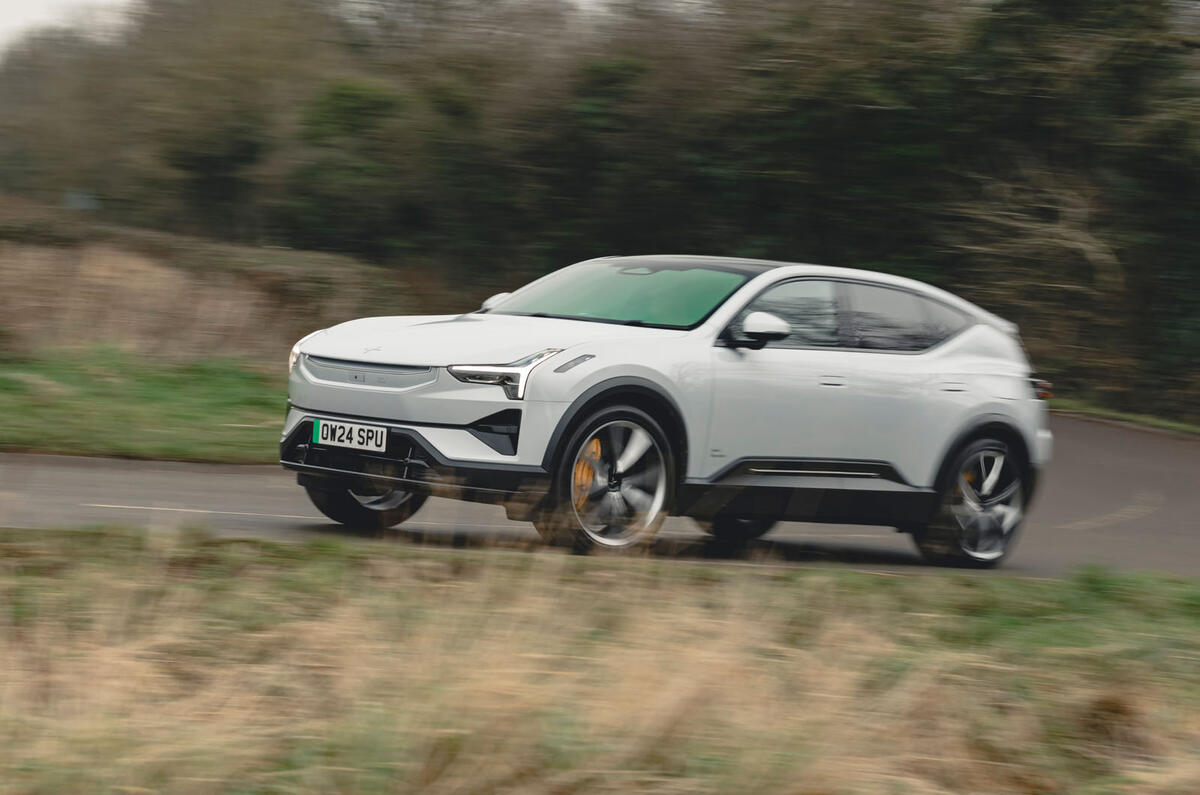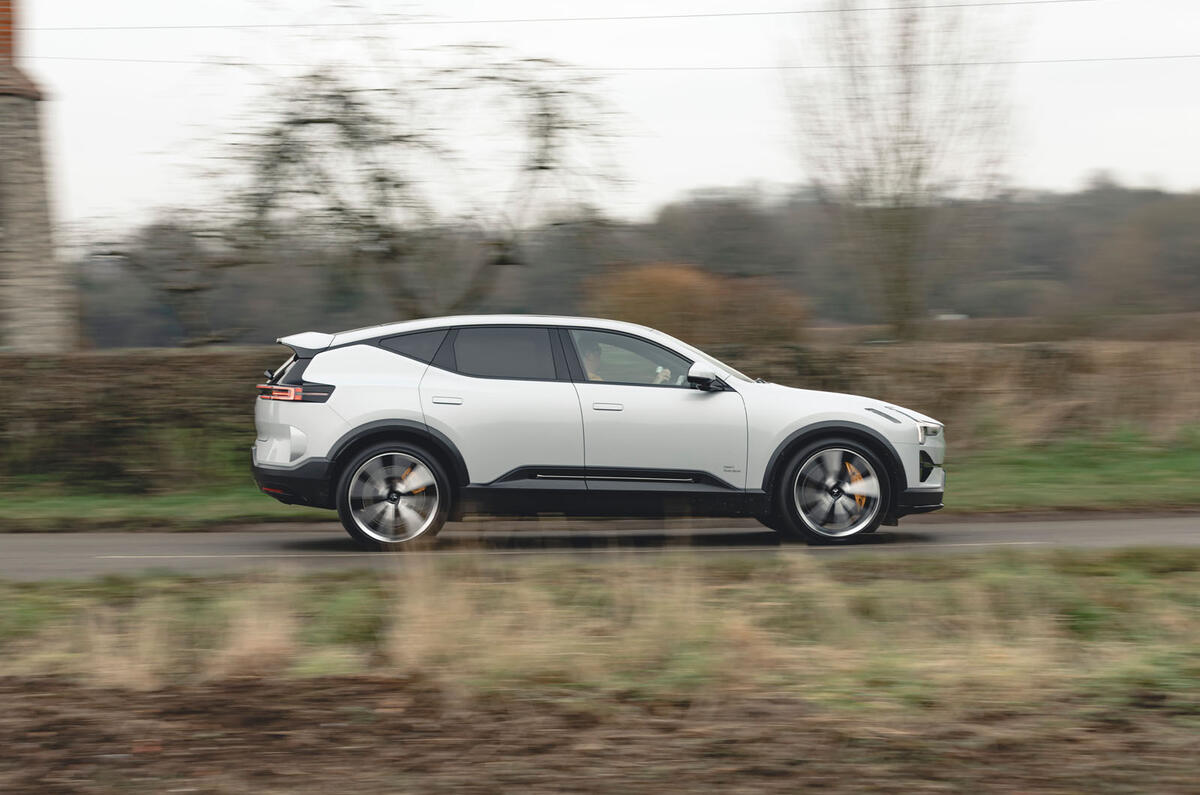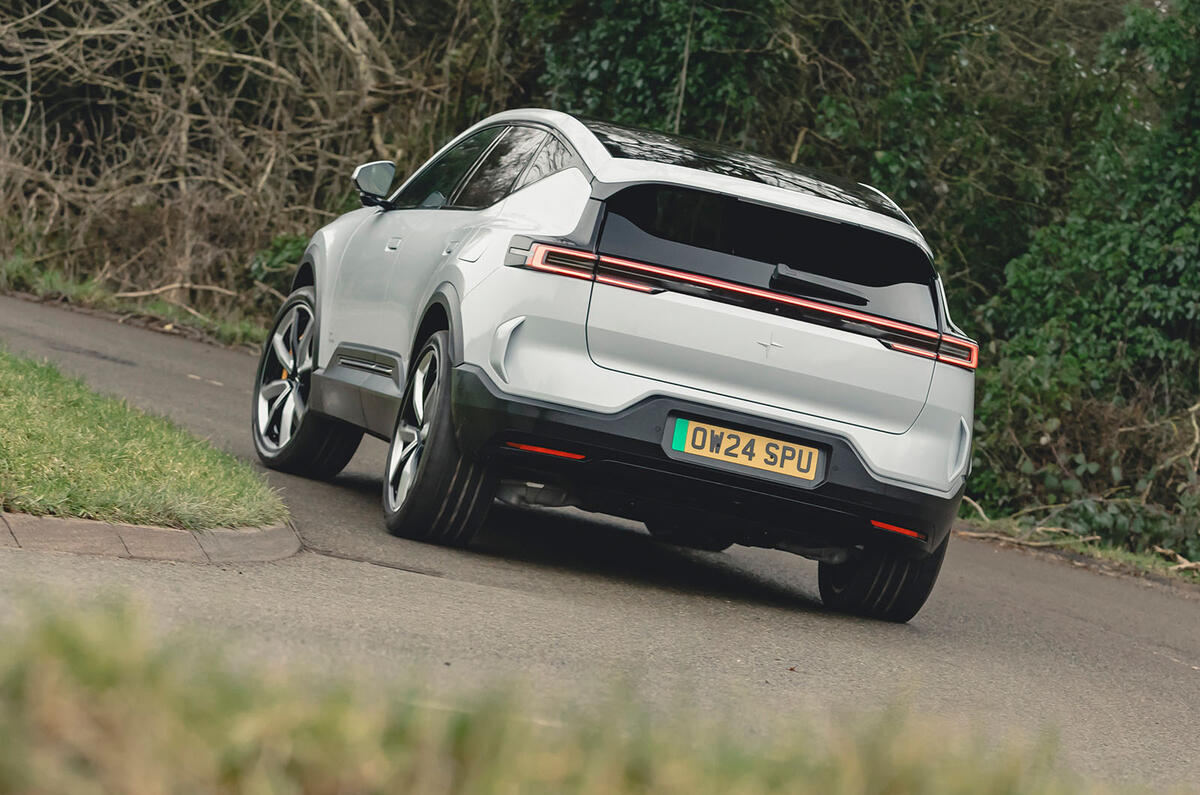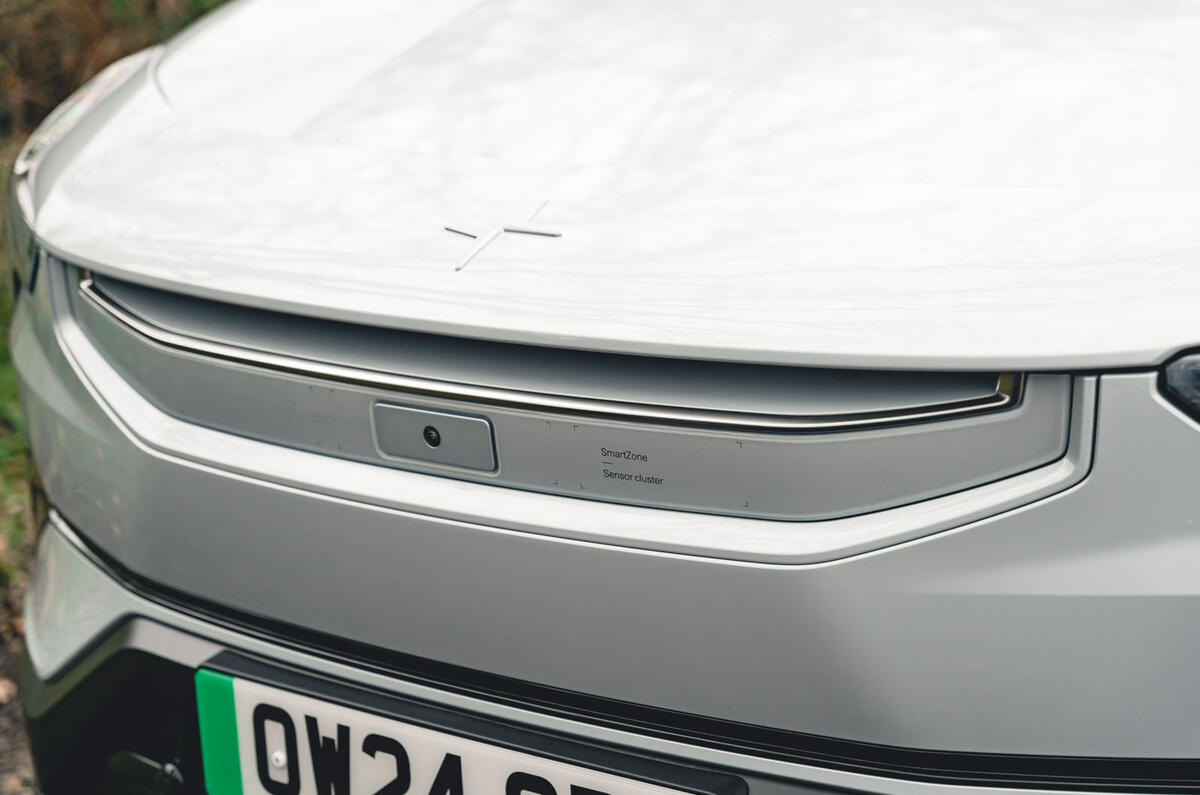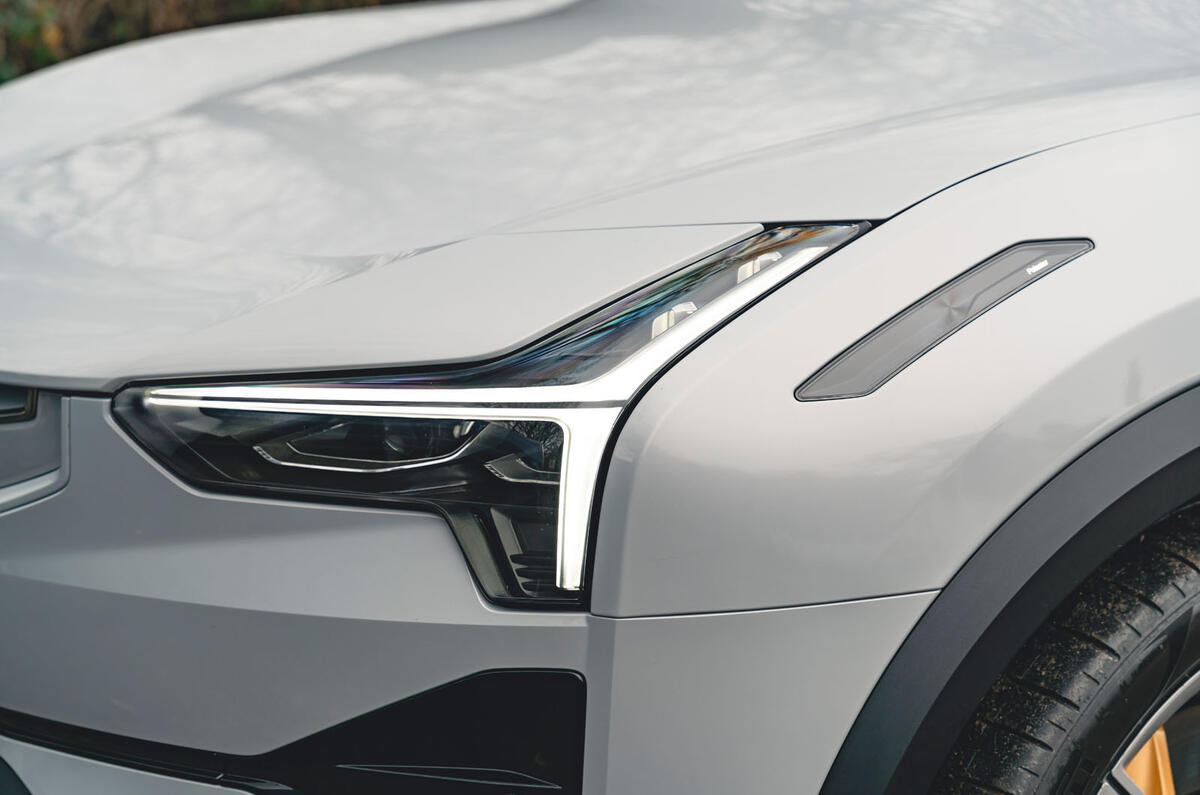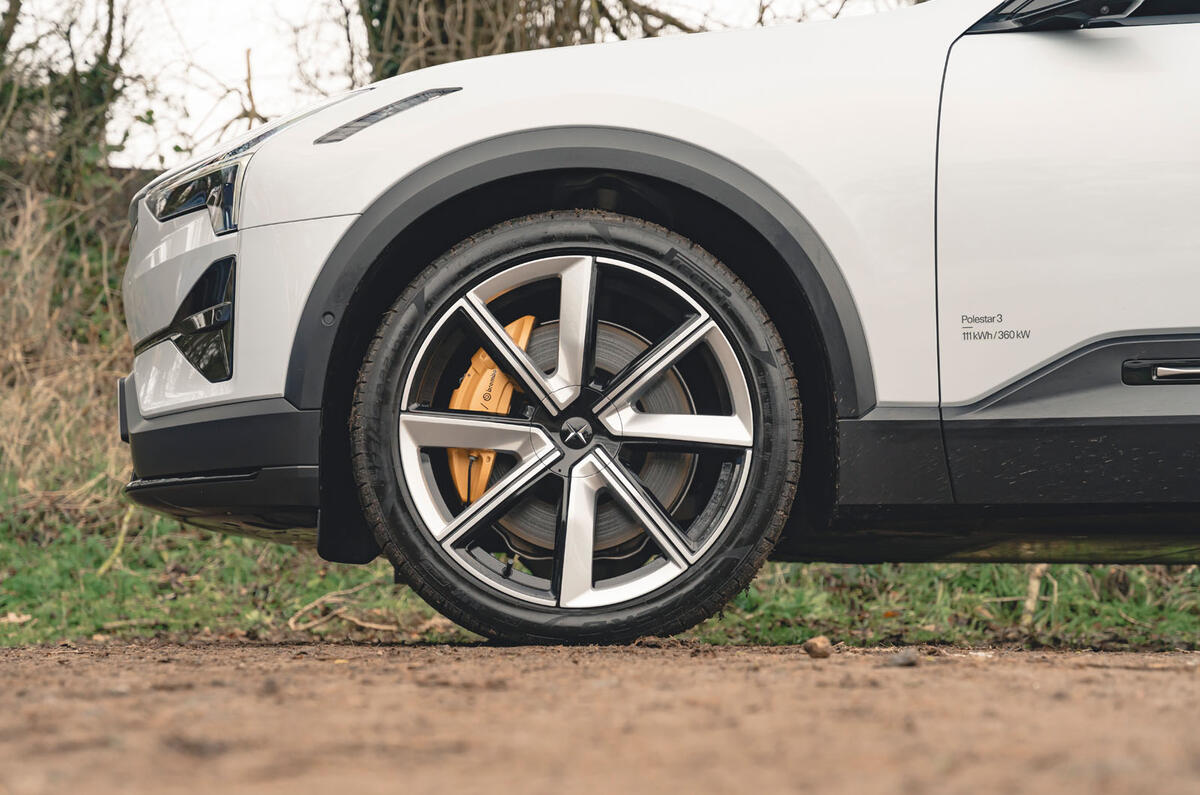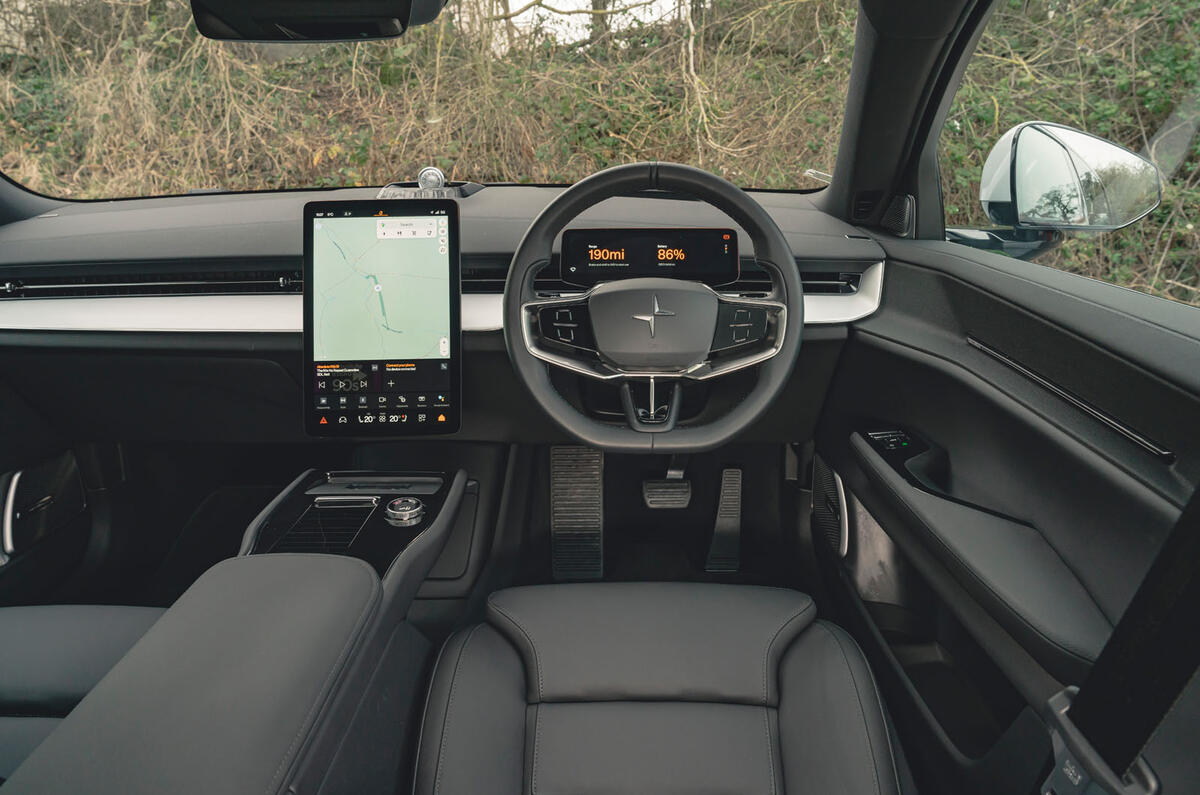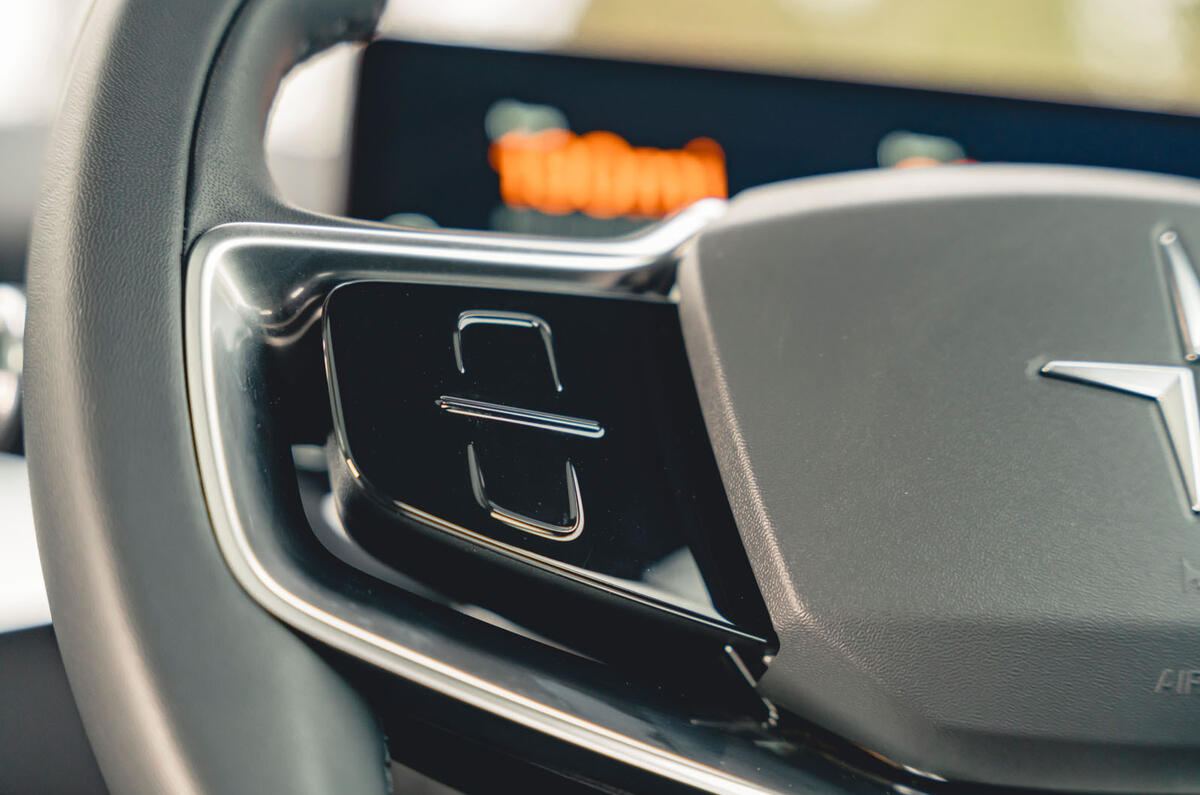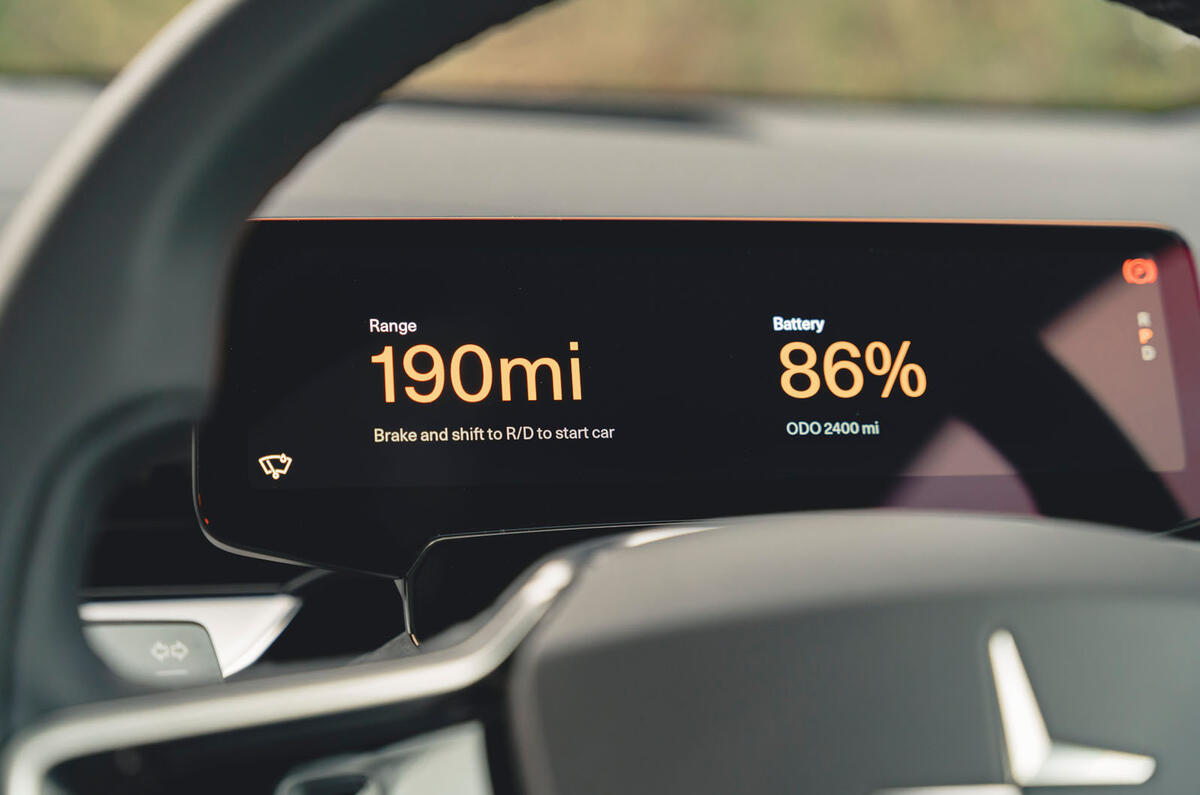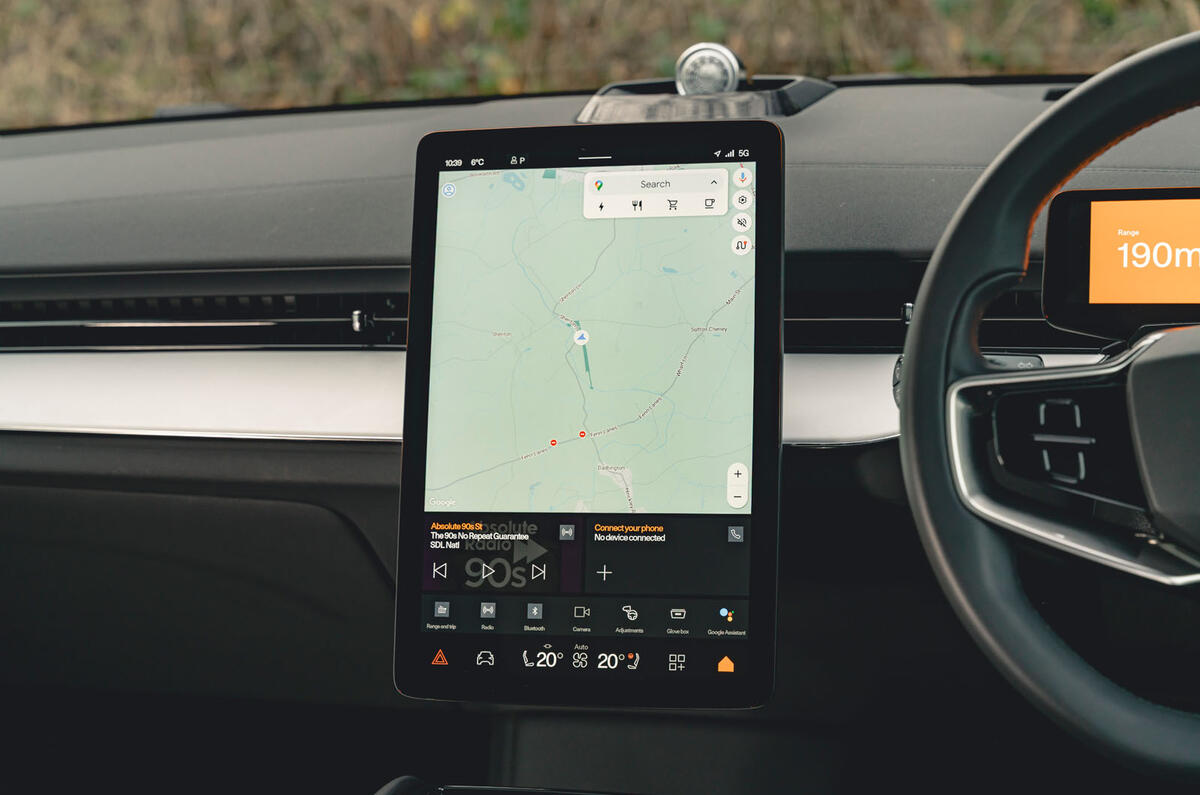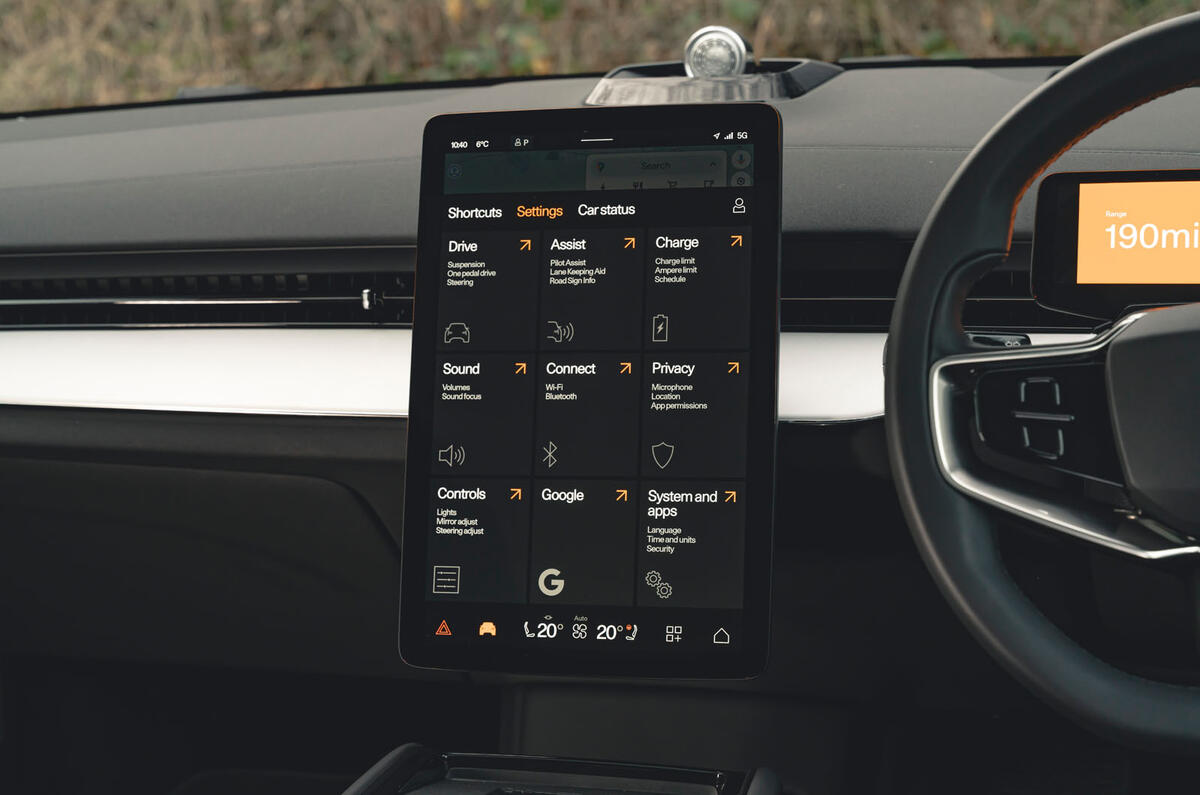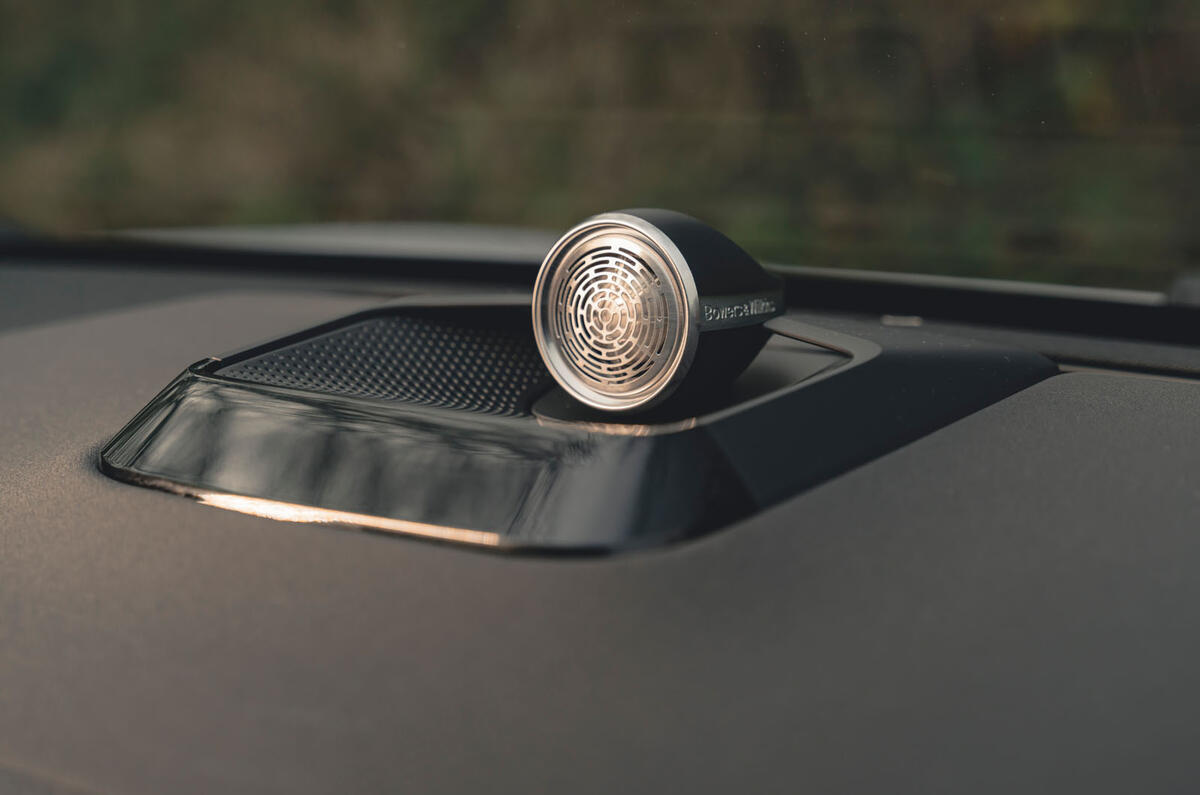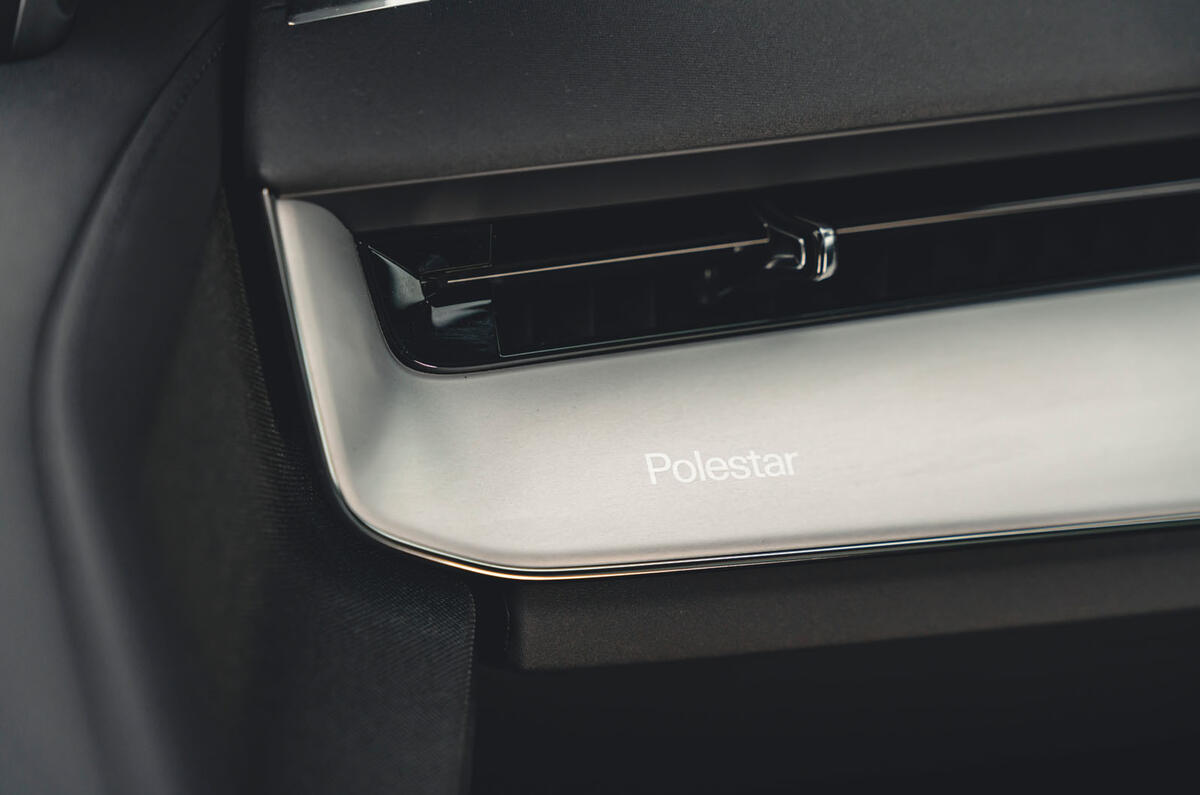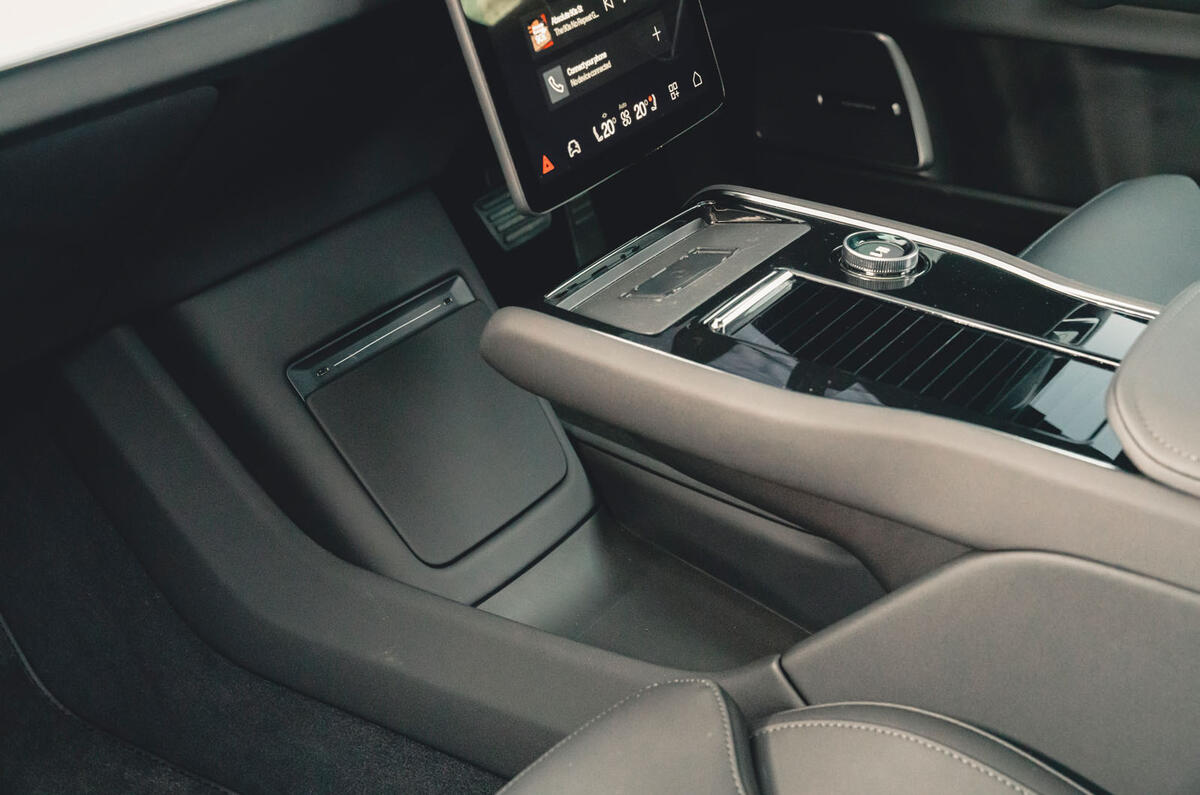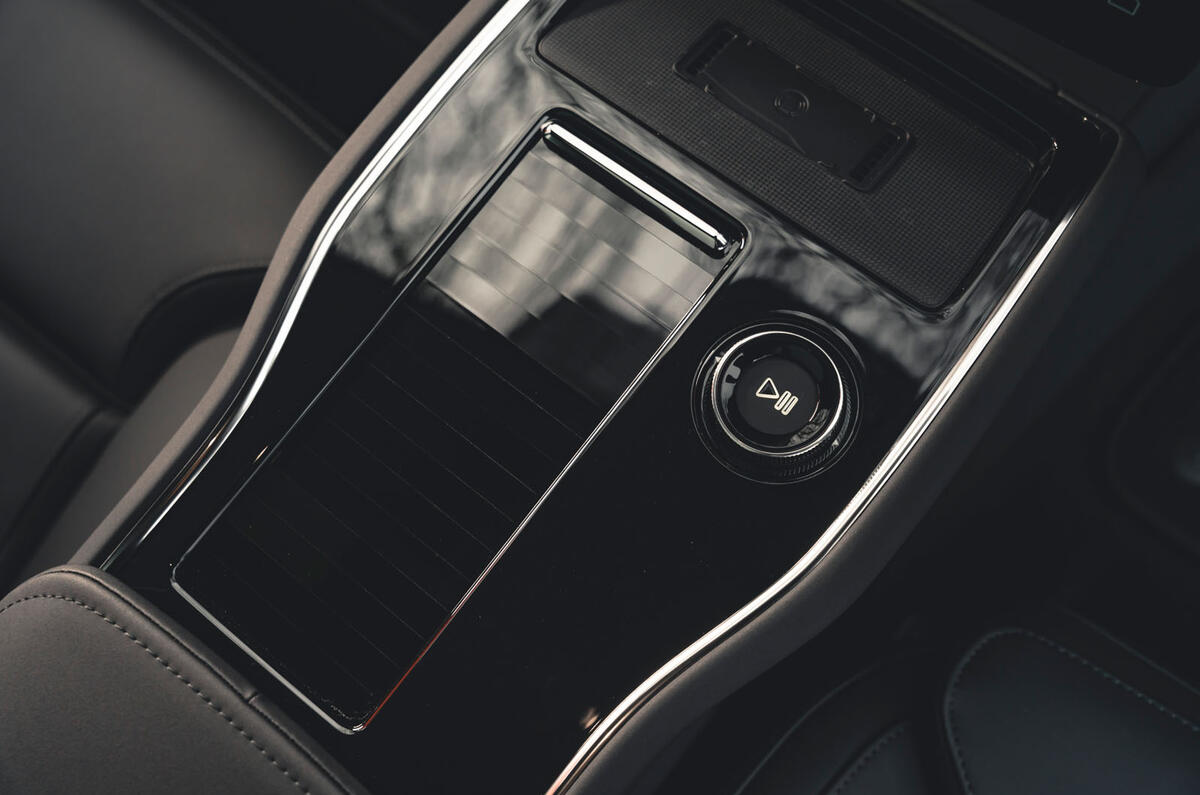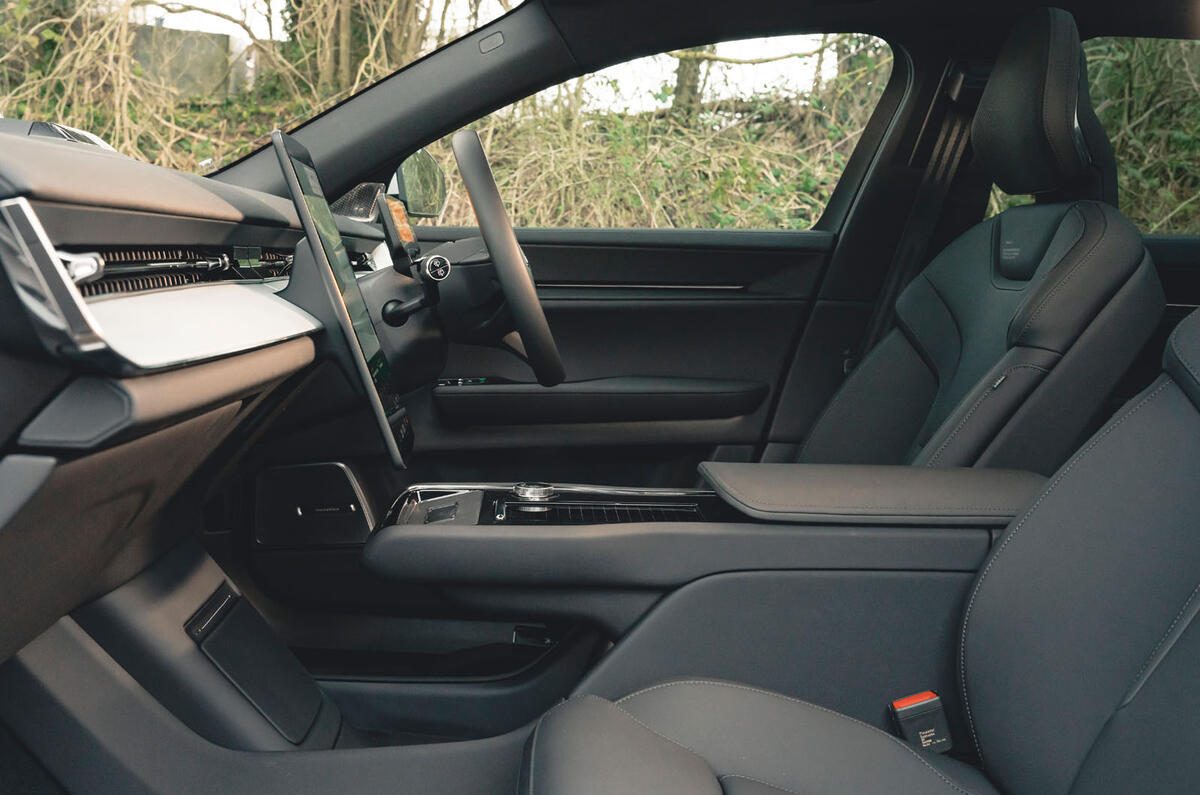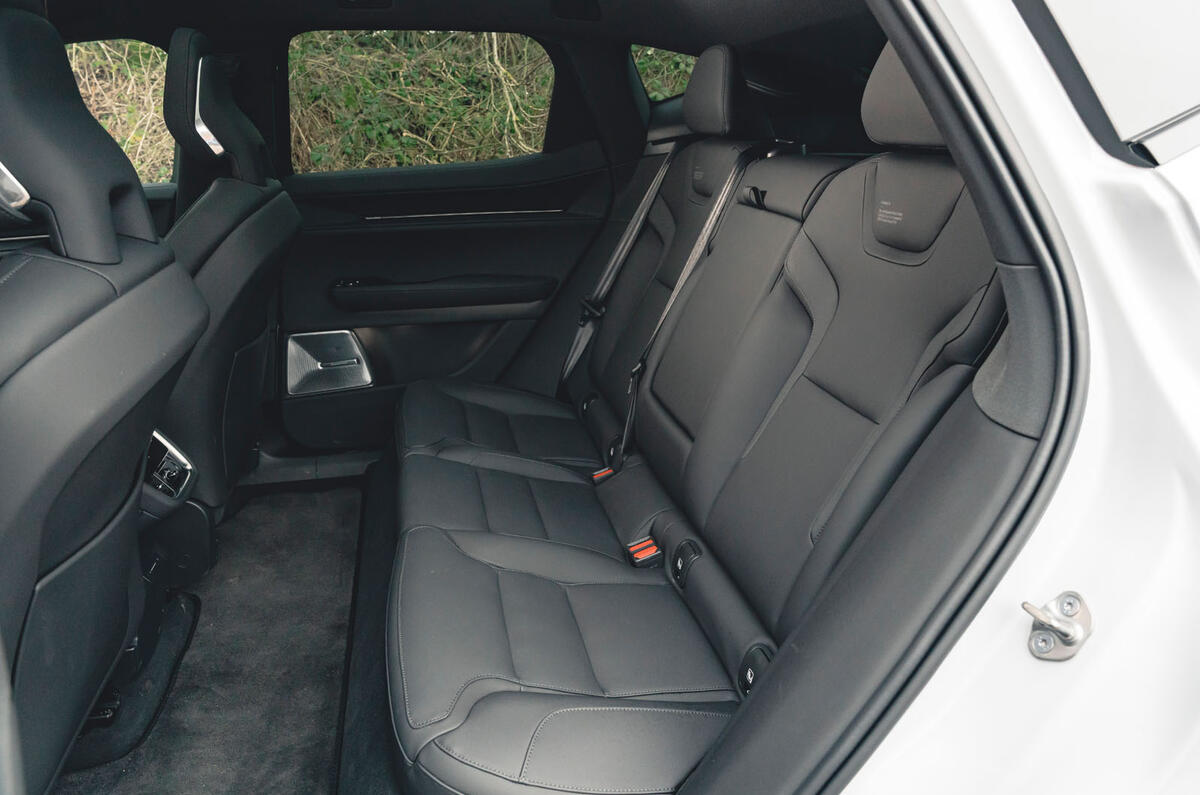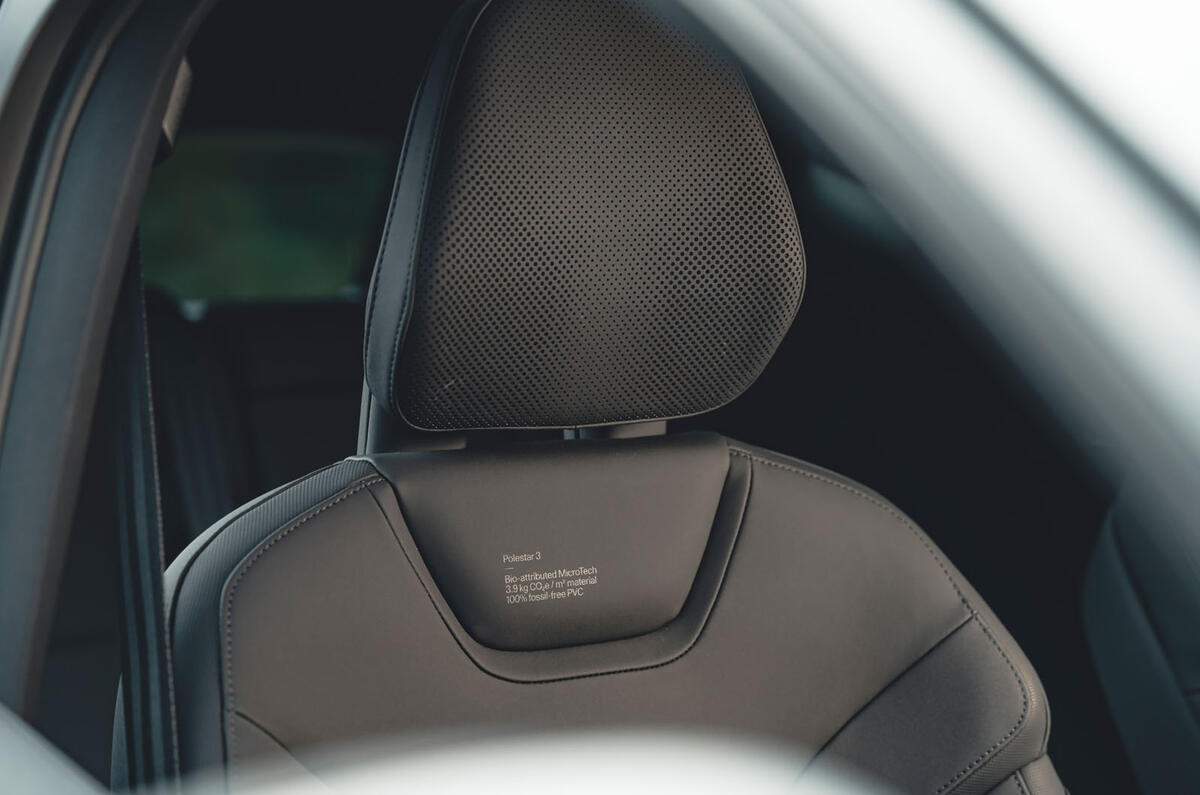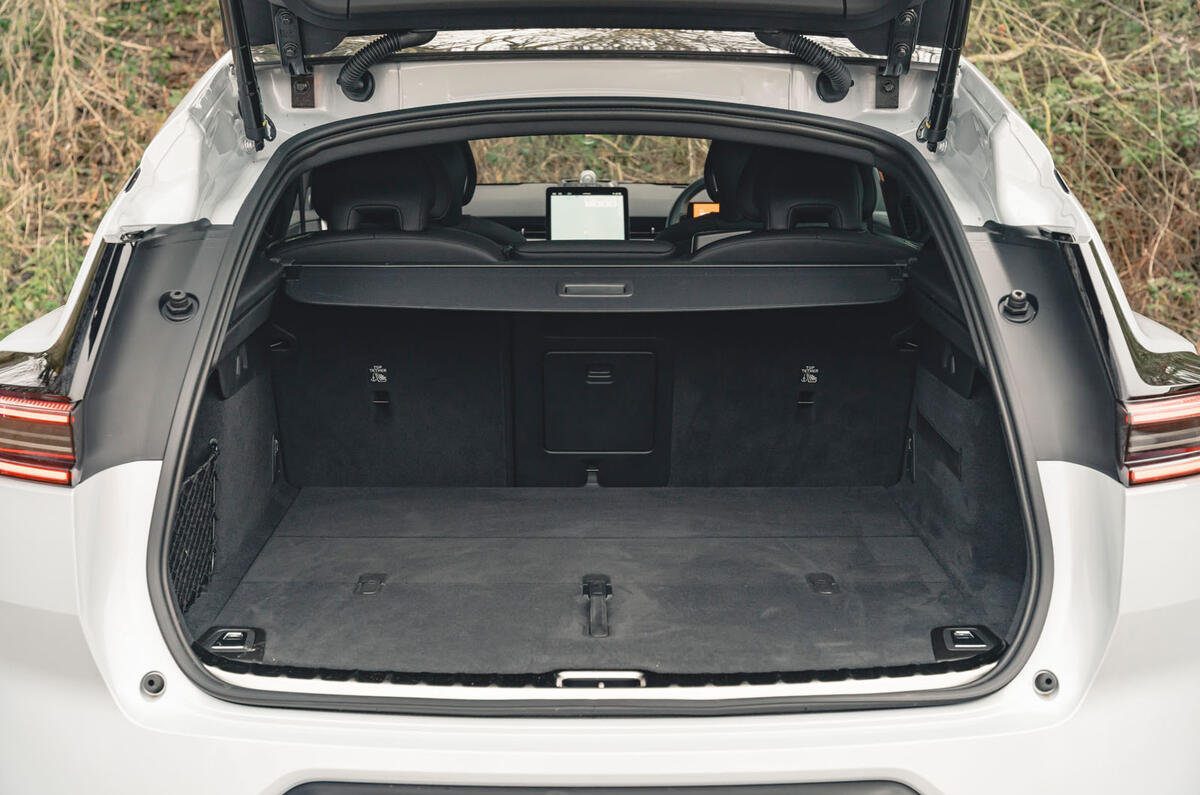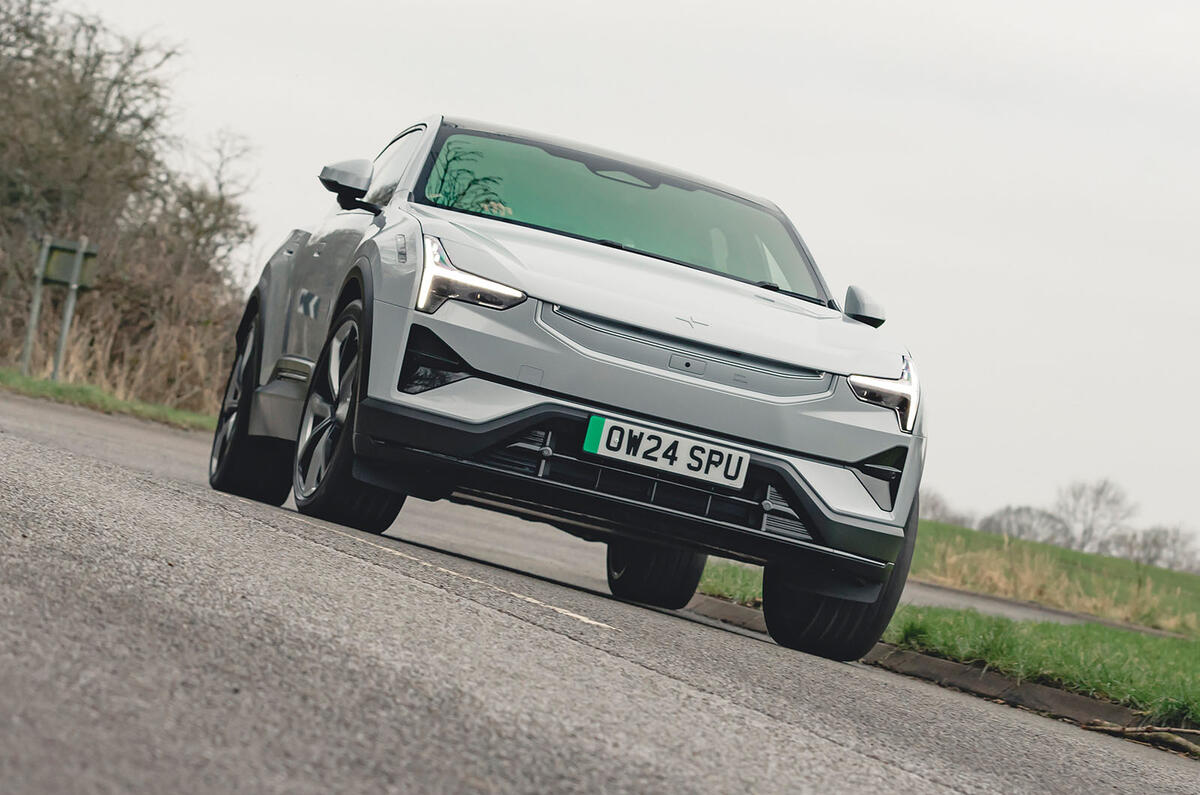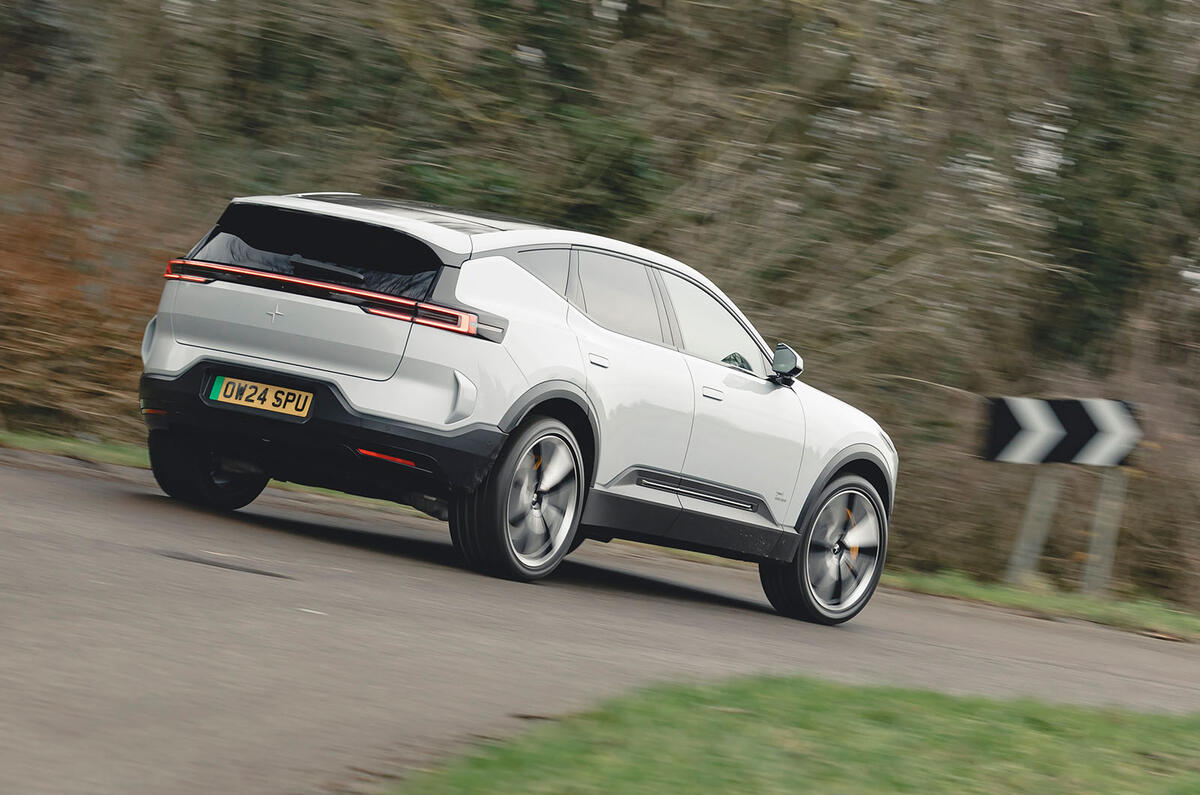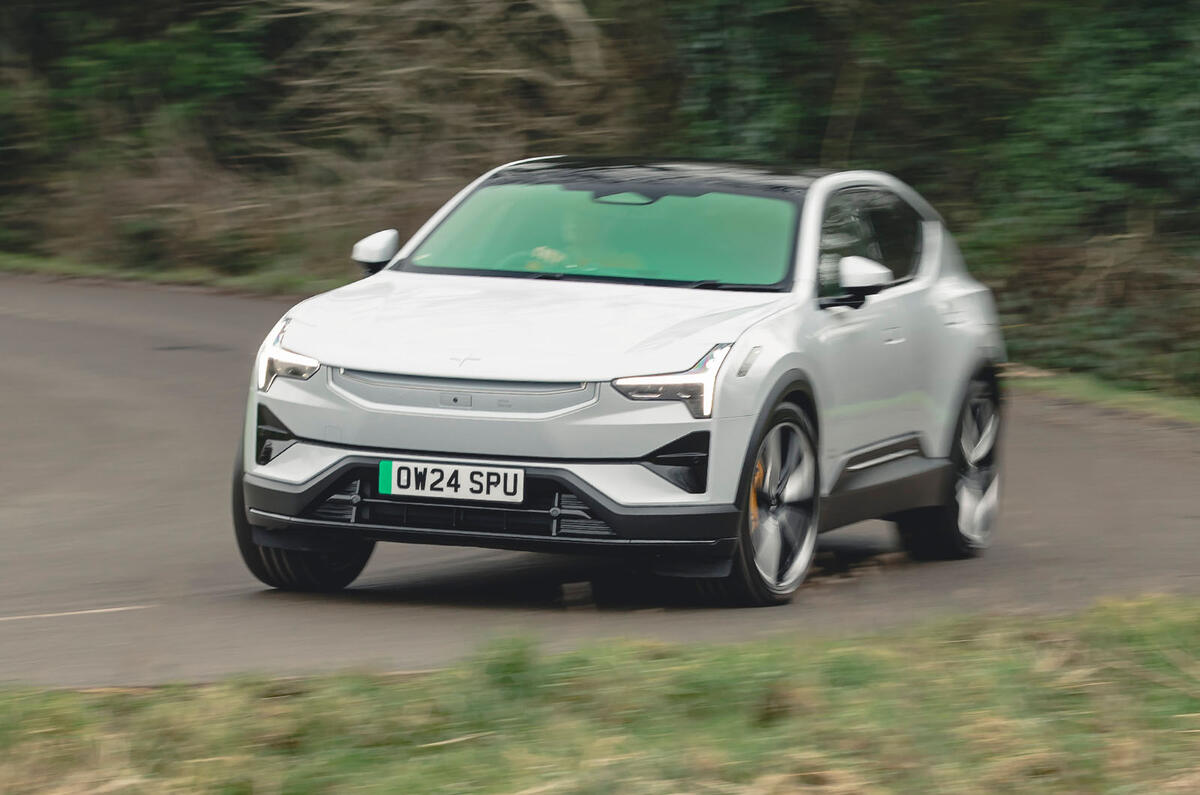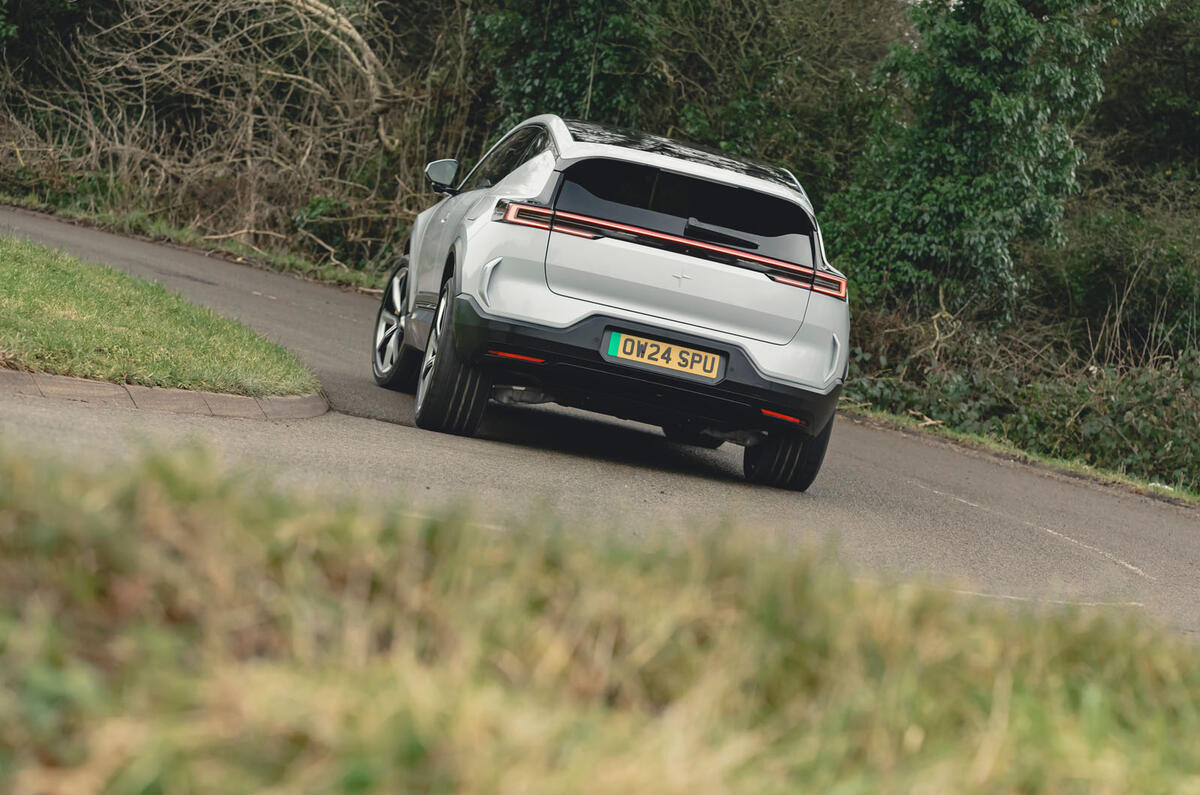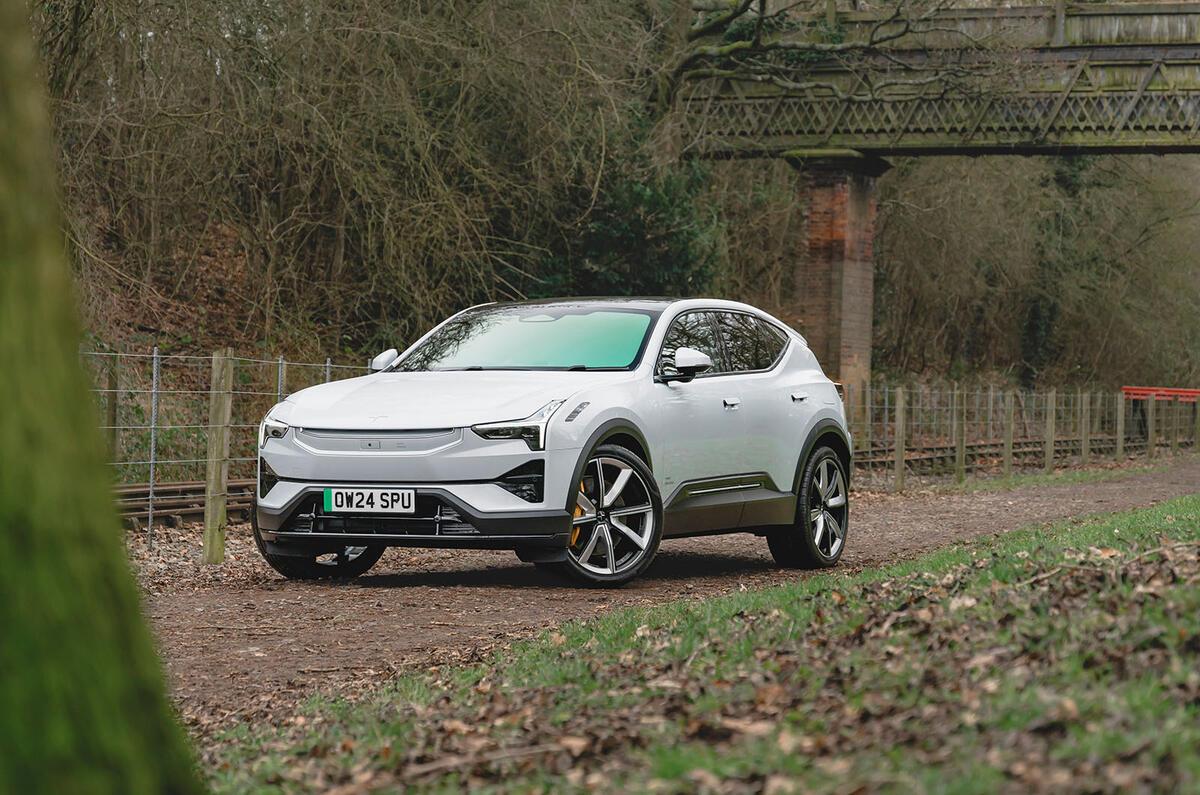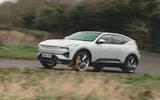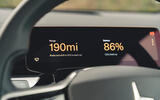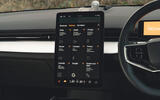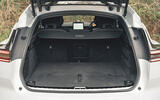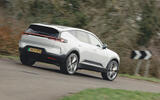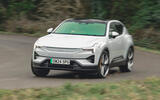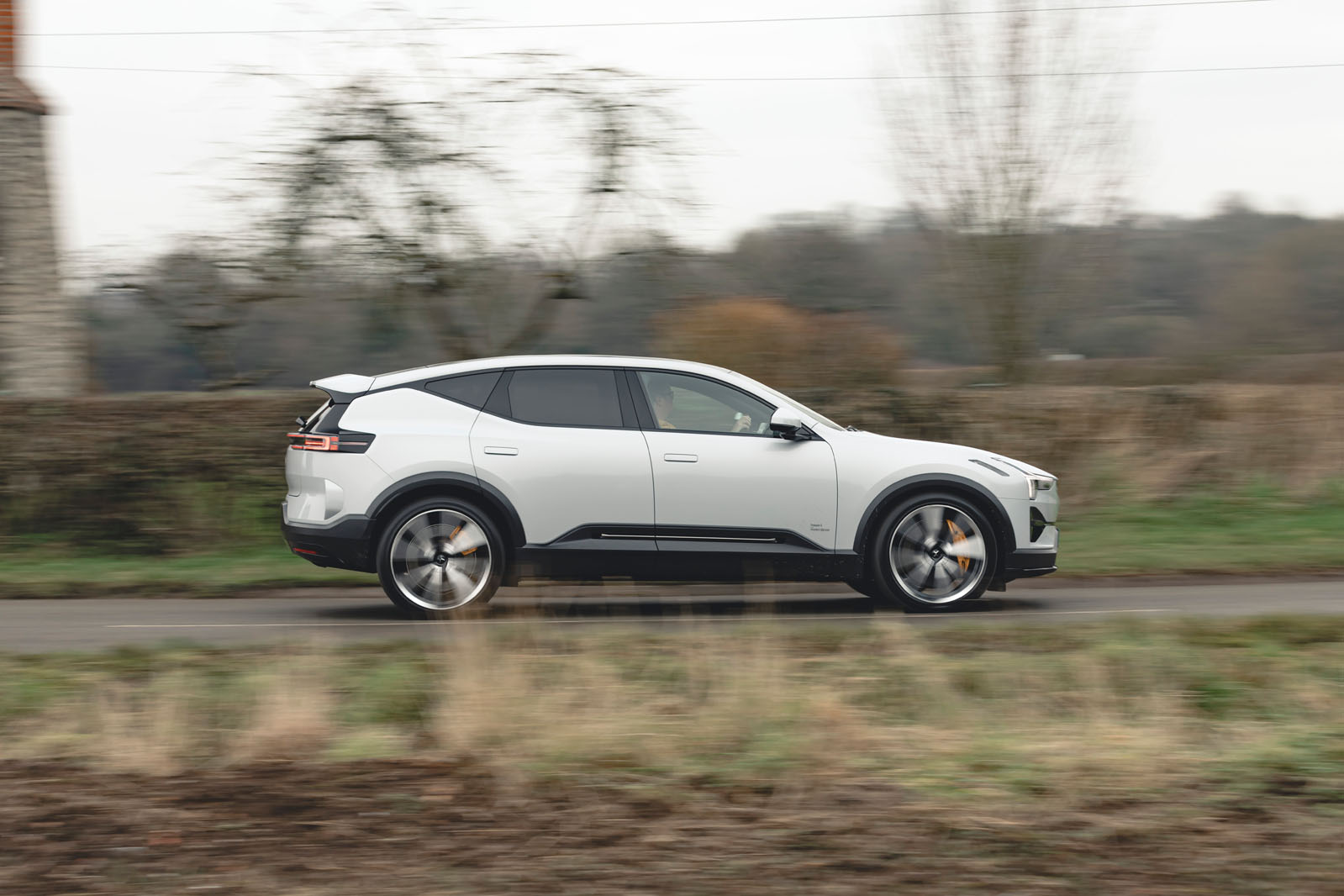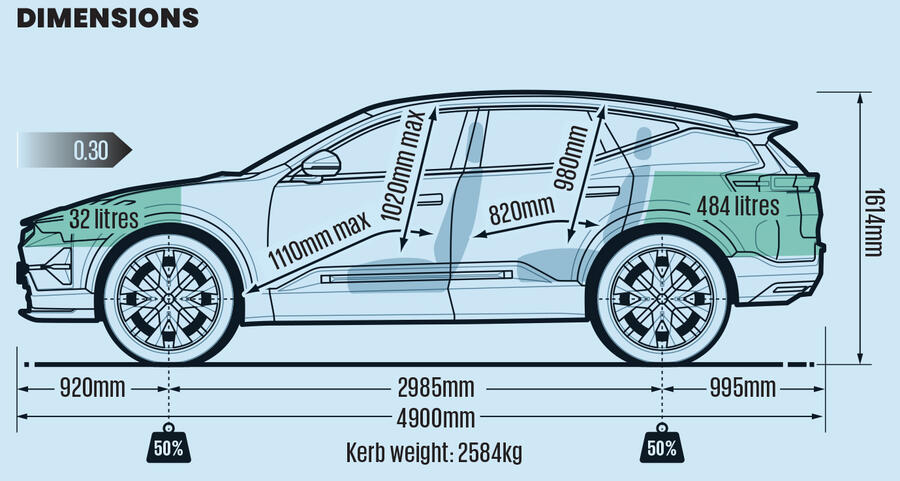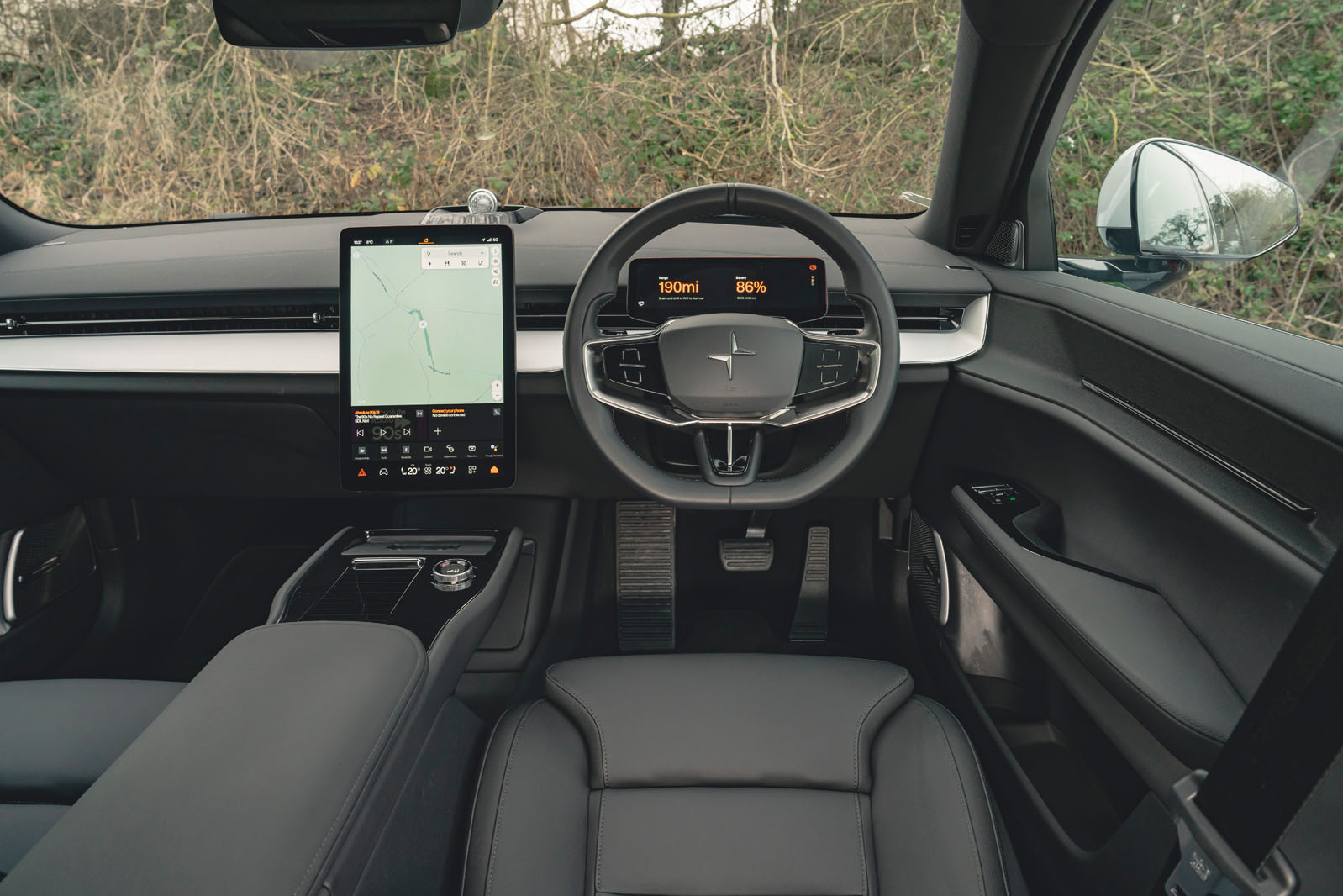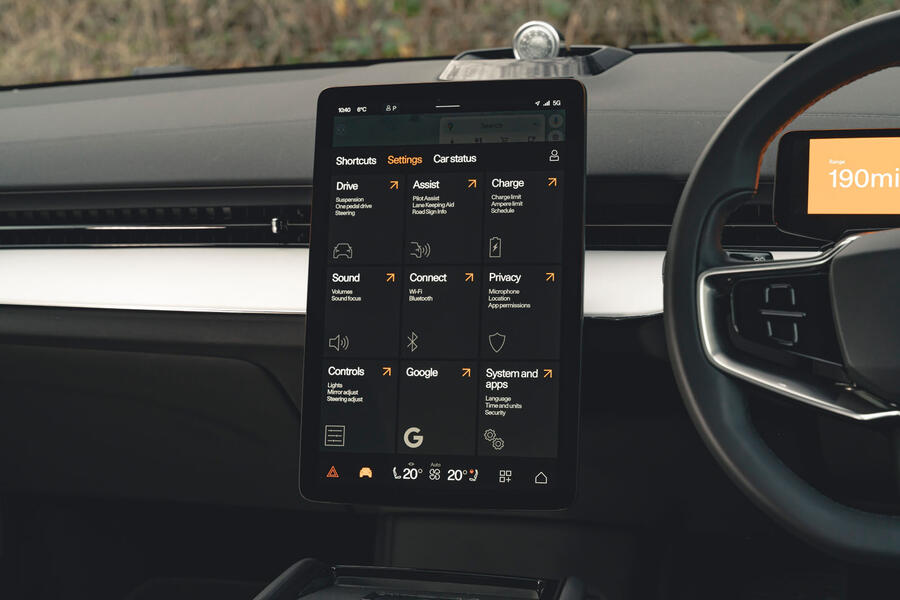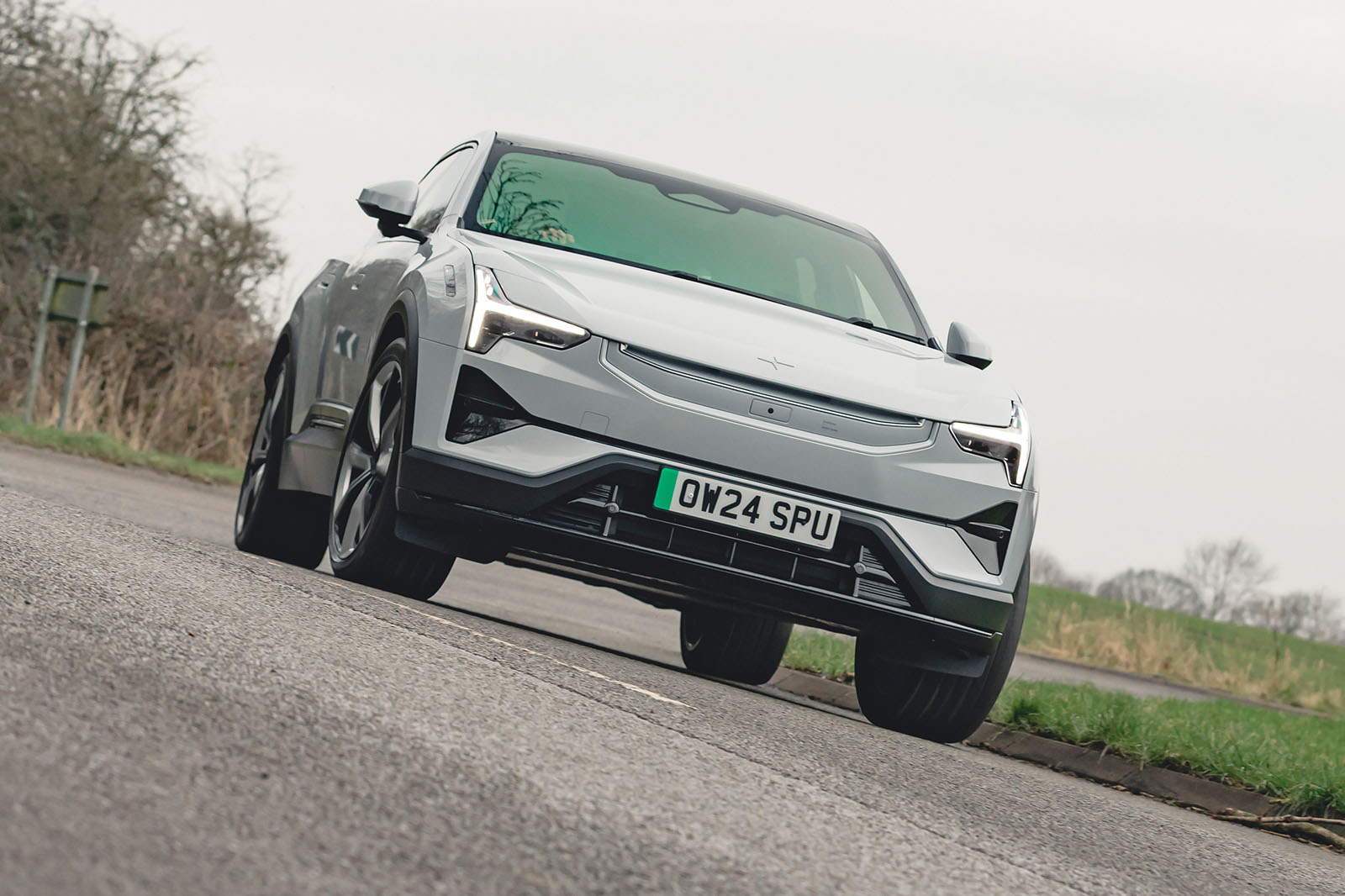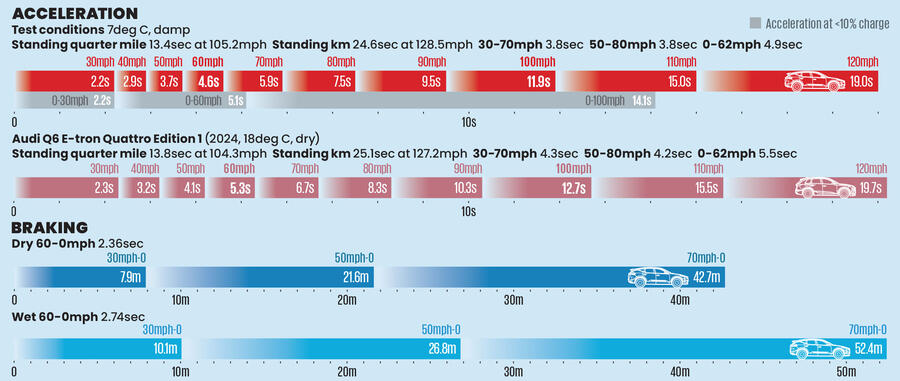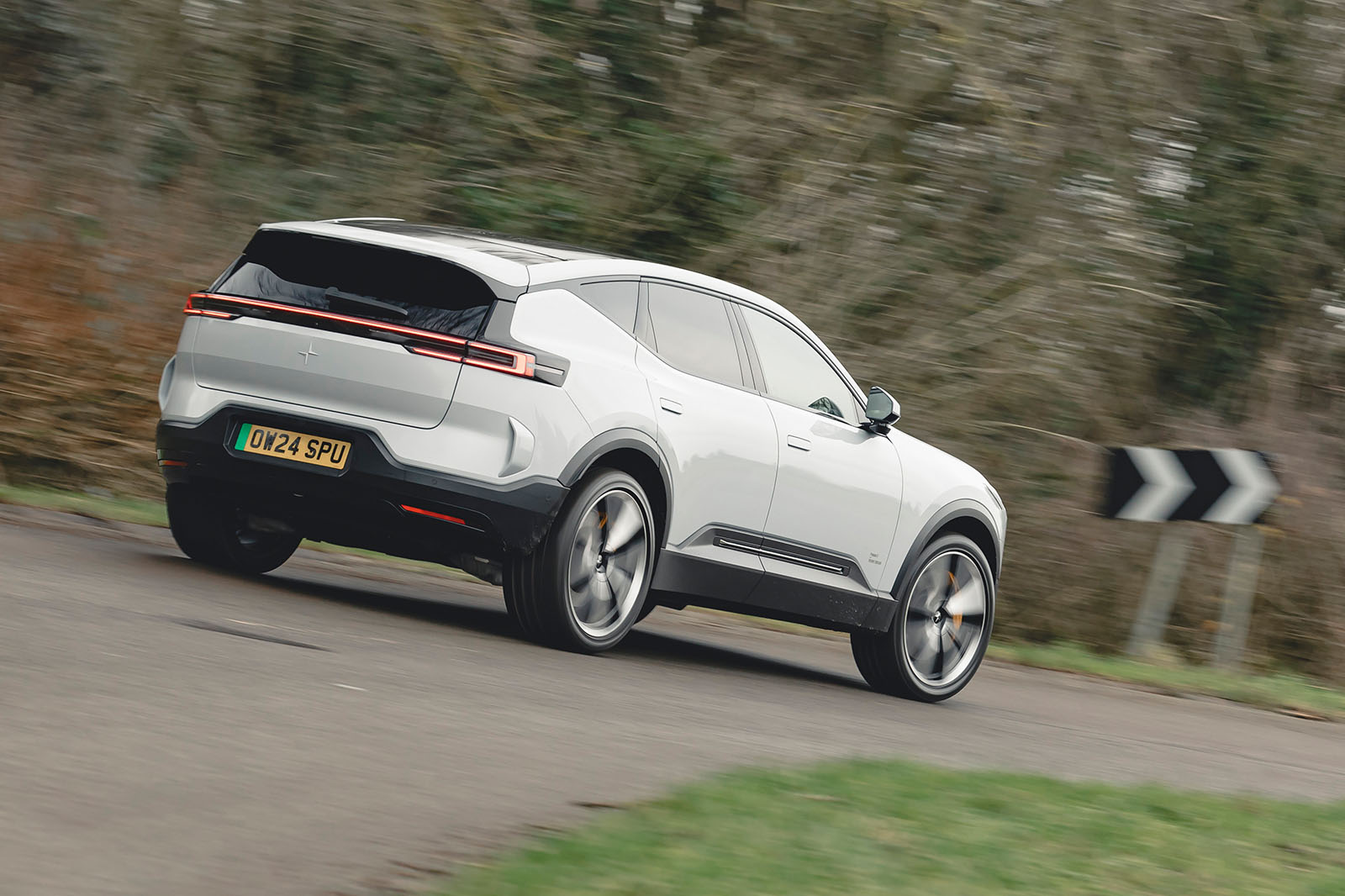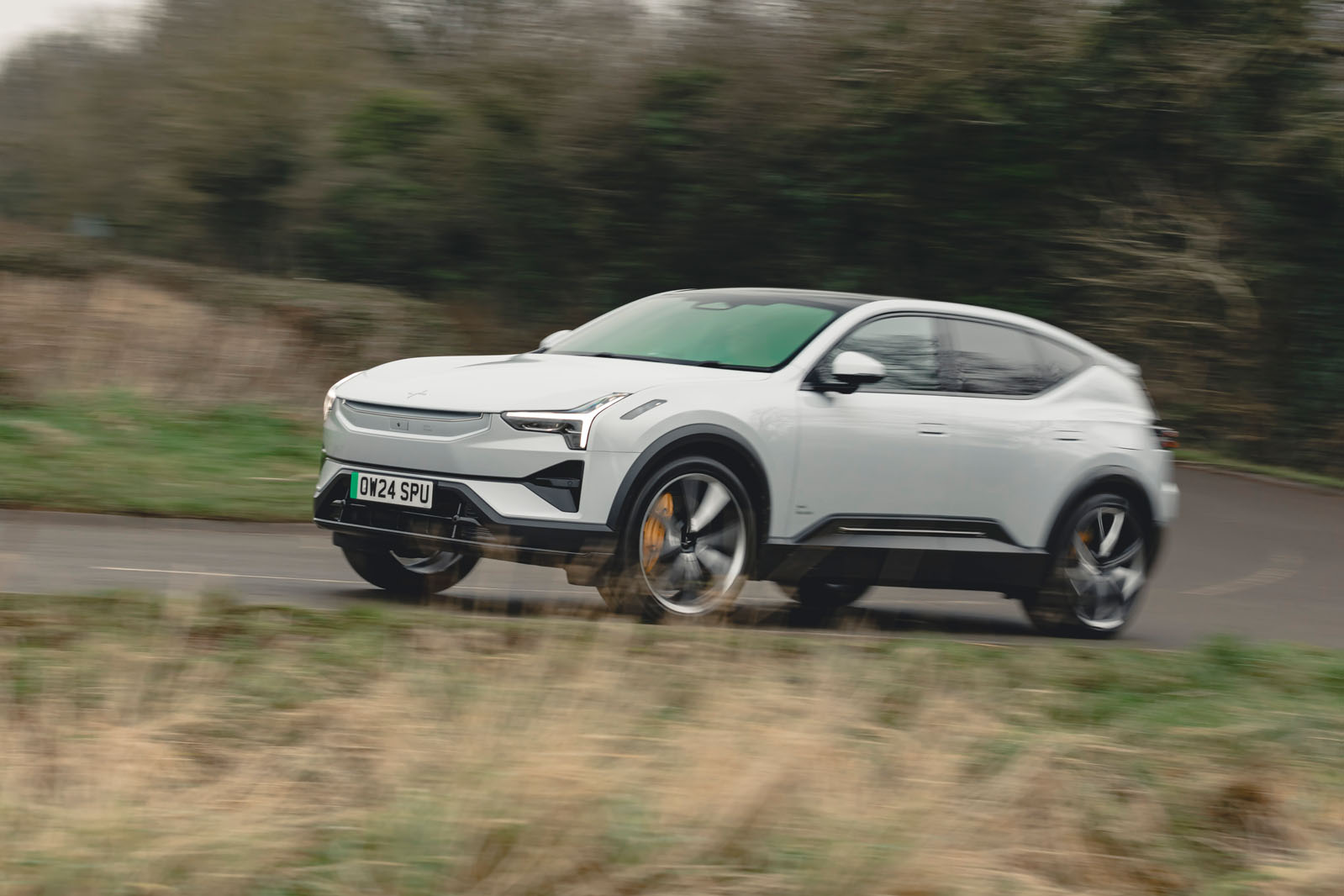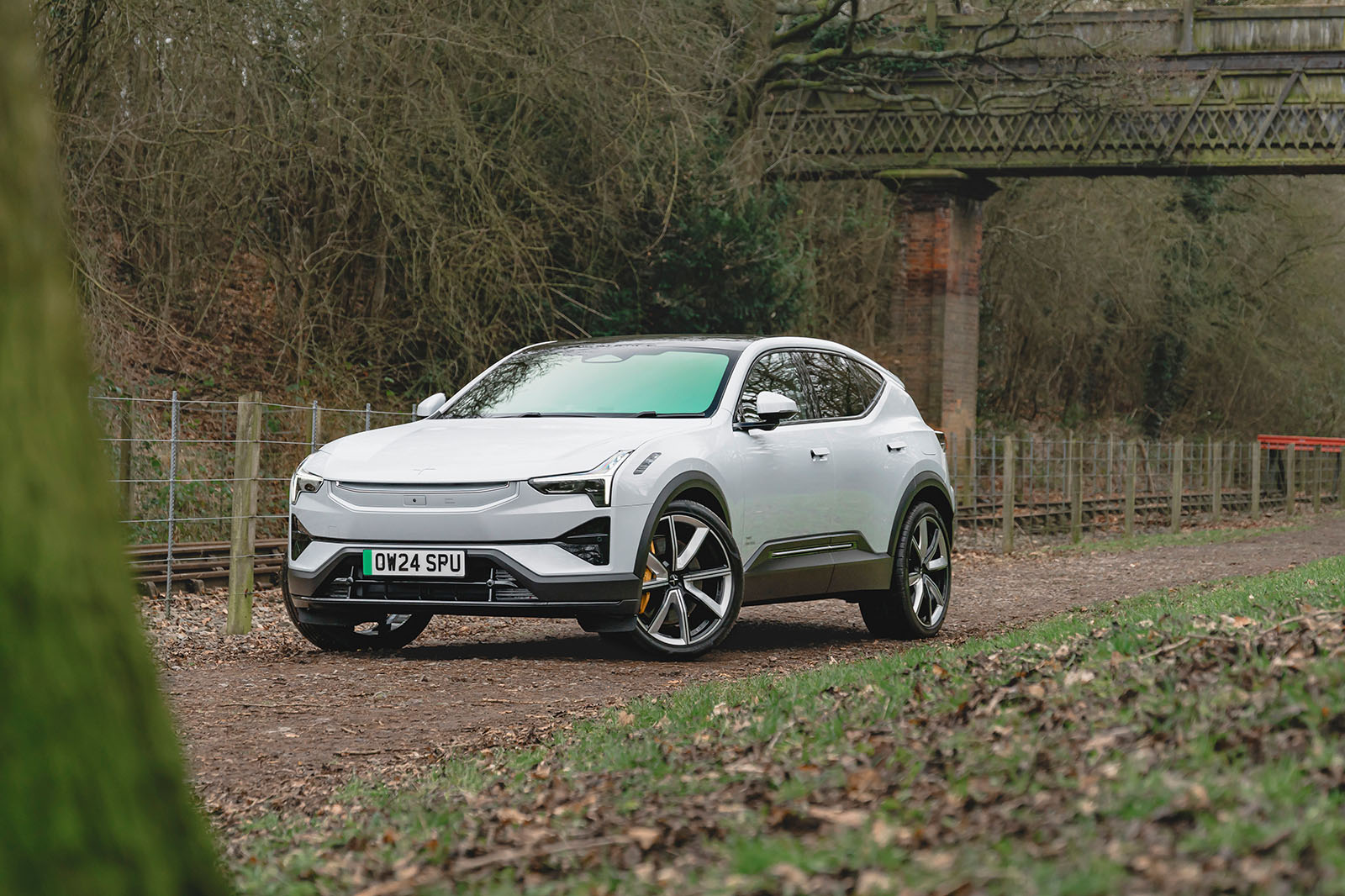Even though we tested it without the Performance Pack upgrades, the Polestar 3 proved itself quite fast on Horiba MIRA’s mile straights.
If you’re spending around £80,000 on a dual-motor electric SUV, you should probably expect 0-60mph in around six seconds, but this one will do it in less than five. Even when it battery’s state of charge is below 10%, it isn’t a great deal slower. Considering the car’s hefty 2.6-tonne weight as tested, that’s all the more impressive.
A little less impressive is the car’s tendency to regulate and limit its motor power as heat builds up in its drive battery. Even on a chilly test day, our car had begun to peg back motor output to about 50% of a normal level before the end of our acceleration benchmarking process, at which point cooling running was needed to restore it. It repeated the same during limit handling testing, before three full-power flying laps of MIRA’s drying handling circuit had been completed.
This may simply be the result of conservative battery software calibration on the part of Polestar’s powertrain engineers – and, in any case, only during intensive autobahn driving would you ever be likely to experience the issue on the public road. Still, it’s not something we see from every premium EVs in 2025, and certainly not to the same extent.
In more normal driving, the 3 declines to bombard you with too much choice in configuring its powertrain. There are three brake regeneration settings, ranging from unfettered coasting on a trailing throttle up to one-pedal-style regen braking (although we would prefer to be able to toggle them on paddles, rather than the touchscreen).
Aside from those, you can choose between Range and Performance modes for the powertrain. It feels typically linear, potent and responsive in both. The former certainly isn’t made to feel like some nannyish Eco throttle calibration, although it does seem to soften accelerator response a little. Presumably because it defaults to propelling the car via the front motor, disengaging the rear one as often as it can to save energy, Range mode can also sometimes make you wait for a second or so before it will deliver full power against kickdown, which feels odd in an EV.
For this reason, Performance mode is the one to select for keener driving, and it delivers a likeably instant and muscular briskness that’s always tempting to tap into, and is also unaffected by any imitation engine noise.
More recently, we've tried the Single Motor on UK roads. It benefits from the same excellent driveability as the Dual Motor, so is very pleasnt to potter around in. However, we found its performance slightly underwhelming. While 295bhp sounds a healthy amount, this is still a 2.4-tonne car, so it results in 0-62mph in 7.5sec. That’s �fine, but given the 3’s sporty aspirations, you can’t help but expect something punchier. For reference, the single-motor Porsche Macan Electric has 335bhp and takes 5.7sec
Assisted Driving - 3 stars
Polestar provides an adaptive cruise control system as standard, as well as blindspot monitoring, active lane keeping, driver monitoring and a speed limit information system with limit warnings.
There’s a permanent shortcut on the touchscreen to disable the speeding ‘bongs’ should you want to. Disabling the lane departure system, which tugs at the steering wheel, is harder – but you will want to, as it’s a little intrusive on country roads.
The driver monitoring system, meanwhile, doesn’t seem to be fully switchable and is a little heavyhanded and annoying - temporarily disabling the guided cruise control, for example, if it deems that you have been looking away from the road for too long or on repeated occasions (even though all you might have been doing is looking for the button to disable it).
